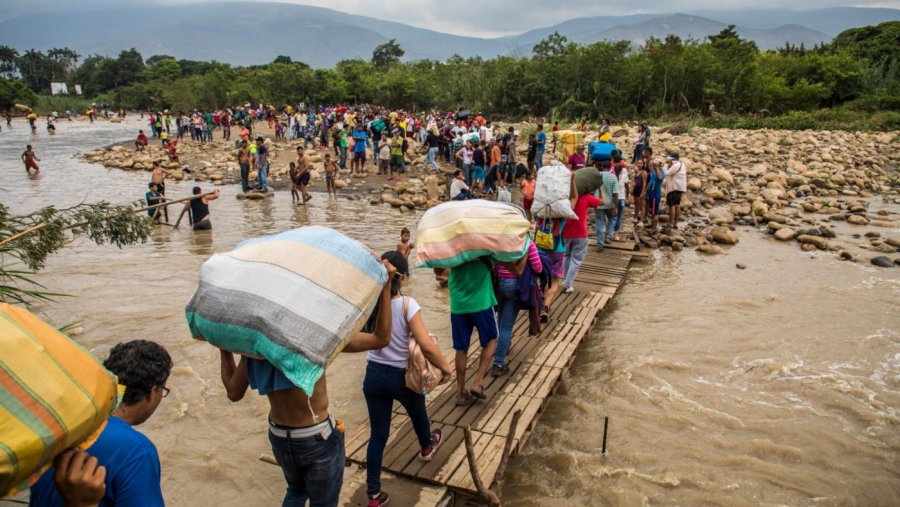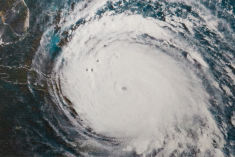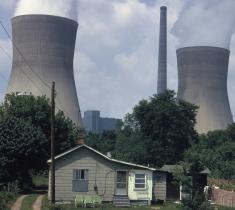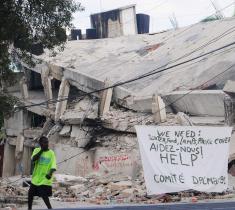
Resilience is a word used very liberally today in the context of sustainability. Resilience can refer to forests recuperating from clearcutting, communities coping with natural disasters, businesses developing recovery plans, as well as a variety of other situations. While resilience is an attractive term, its meaning can be elusive. Therefore, it is useful to deconstruct the term and to understand its conceptual application, as well as its use as an analytical tool; this explainer focuses on these uses for three groups: ecologists, social scientists, and those studying socio-environmental systems and their problems.
In ecology, resilience is grounded in the ideas that natural systems vary in time and space and that their ability to absorb change and disturbance allows them to persist (Holling 1973). Traditionally, scientists viewed an ecological system as disturbed only when it had departed from some “natural” or “historic” state, but today, ecologists admit that “natural” and “historic” are relative, and sometimes subjective, terms (Oliver et al. 2023). Ecologists typically evaluate resilience based on how much disturbance an ecological system can withstand without it changing to a recognizably new state [e.g., different species, functional groups, etc. (Chambers et al. 2019)] or the time it takes for an ecosystem to recover to some “less-impacted state” following a disturbance (Hobbs and Suding 2009). Most recently, critics have said this view of resilience is too simplistic because it focuses on singular events. A suggested alternative for measuring resilience is calculating the “mean exit time” from an ecological time series—i.e., the time it takes for an ecological system to cross a threshold of change after taking into account the natural variability of a system (Arani et al. 2021). The advantage of such an approach is that it makes no assumptions about how to recognize a new state. Because ecological systems often move into new and less desirable states from a human perspective (Moore and Schlinder 2022), the ecological understanding of resilience, today, is closer to how social scientists conceptualize resilience.
In the social sciences, Neil Adger clearly defined resilience as “the ability of groups or communities to cope with external stresses and disturbances as a result of social, political, and environmental change” (Adger 2000, p. 347). Psychologists have widely used the term resilience for a long time, viewing it as a process although some have argued it can be a personal trait (Vella and Pai 2019). Here, resilience focuses on personal characteristics in the context of coping with stress and stressful events. With sociology’s emphasis on social units such as families, communities, and disadvantaged groups, sociologists typically view resilience as a process whose outcome is affected by social structures and circumstances (Estêvão et al. 2017). Regardless of the subdiscipline, the perspective is generally that people, families, and other social systems can make large and rapid changes (positively or negatively, as perceived by humans) compared to even the most resilient ecosystems. Unlike ecological systems, social systems have intentionality: they can learn and make active decisions to change rather than relying on just natural selection (Lorenz 2013). There are generally no agreed-upon ways to measure social resilience. Instead, researchers use indicators or, more often, proxies that represent factors influencing resilience [e.g., surveys assessing the extent to which groups have access to resources and support (Saja et al. 2018)]. Scholars have emphasized that any assessment method or indicator will be normative (Copeland et al. 2020), which certainly applies to many human and social capital parameters (e.g., income, education level, knowledge, skills).
With respect to resilience of socio-ecological systems, Adger, like scholar Billie Turner (2003), pointed out decades ago that while we cannot equate social resilience with ecological resilience, the two must be linked since social and environmental systems are linked. Adger further pointed out that institutions are key to social resilience, and while some institutions are associated with the environment, many are not. These institutions include both formal and informal ones, i.e., organizations created specifically to structure the behavior of humans and those based on individuals conforming to some understood standard or norm, respectively. Socio-environmental resilience research seeks to explicitly link the environment with social factors to better understand what promotes the sustainability of people and the ecosystems upon which they depend. Within both the fundamental research and applied management literature on sustainability, researchers have made efforts to point out the complexity of risk and how essential it is to consider all dimensions as described below.
Dimensions of Risk
Sustainability is tied closely to risk, but risk itself is multi-dimensional. Too often, scientists—especially those focused on climate change—have equated risk with exposure, including the landscape position of a system or group relative to sea level rise or their distance from a river in relation to historic flood height. This view is far too simplistic. Risk must be deconstructed into at least three core dimensions: exposure, hazard, and vulnerability. As implied above, the social science community has considered dimensions of risk for a long time, especially with respect to the role of social status and structures in vulnerability (Imperiale and Vanclay 2021). Though often less emphasized, vulnerability also applies in the context of ecological sustainability—e.g., considering factors that make some species or ecosystems at higher risk of loss or damage (de Lange et al. 2010). Socio-environmental scholars have widely embraced the concept of multi-dimensional risk, often seeking to separate the sources of risk into the three categories described below (e.g., Knighton et al. 2021).
Hazard refers to a physical event such as a hurricane, fire, flood, or earthquake; however, entities have also used it to describe terrorism, workplace safety concerns, and other issues. Typically, researchers have measured hazard based on its historic or projected frequency, intensity, or duration (e.g., hurricane magnitude, drought index).
Exposure risk is usually determined by location (i.e., the presence of communities, infrastructure, or other social or cultural assets in settings or places more likely to be impacted by a hazard). Measuring a group’s risk for exposure – where the group is relative to the source of the hazard – involves using the size of the population or extent of infrastructure in that region to quantify the extent of the exposure.
Vulnerability refers to the capacity to be impacted. In a social context, vulnerability is the susceptibility of social groups to adverse impacts of any kind of hazard—e.g., economic, environmental, disease, conflict—and this susceptibility is determined by the capacity of groups to anticipate, confront, repair, and recover from the effects of the hazard. The usual assumption is that a group’s racial/ethnic and economic status determine its vulnerability; however, this is an oversimplification because impoverished people or those who typically experience racial discrimination can cope with hazards if they have strong social networks that provide support, they have the knowledge to prepare, or they live in a state in which protective resources are provided (e.g. Maldonado et al. 2016).
Additional Reading
The articles cited in the text of this Explainer are useful, as well as the following:
Biggs, R., Schluter, M., & Schoon, M. (Eds.). (2015). Principles for Building Resilience. Sustaining Ecosystem Services in Socio-Ecological Systems. Cambridge University Press.
Sterk, M., van de Leemput, I.A., & Peeters, E. (2017). How to conceptualize and operationalize resilience in socio-ecological systems? Current Opinion in Environmental Sustainability, 28, 108-113. https://doi.org/10.1016/j.cosust.2017.09.003


